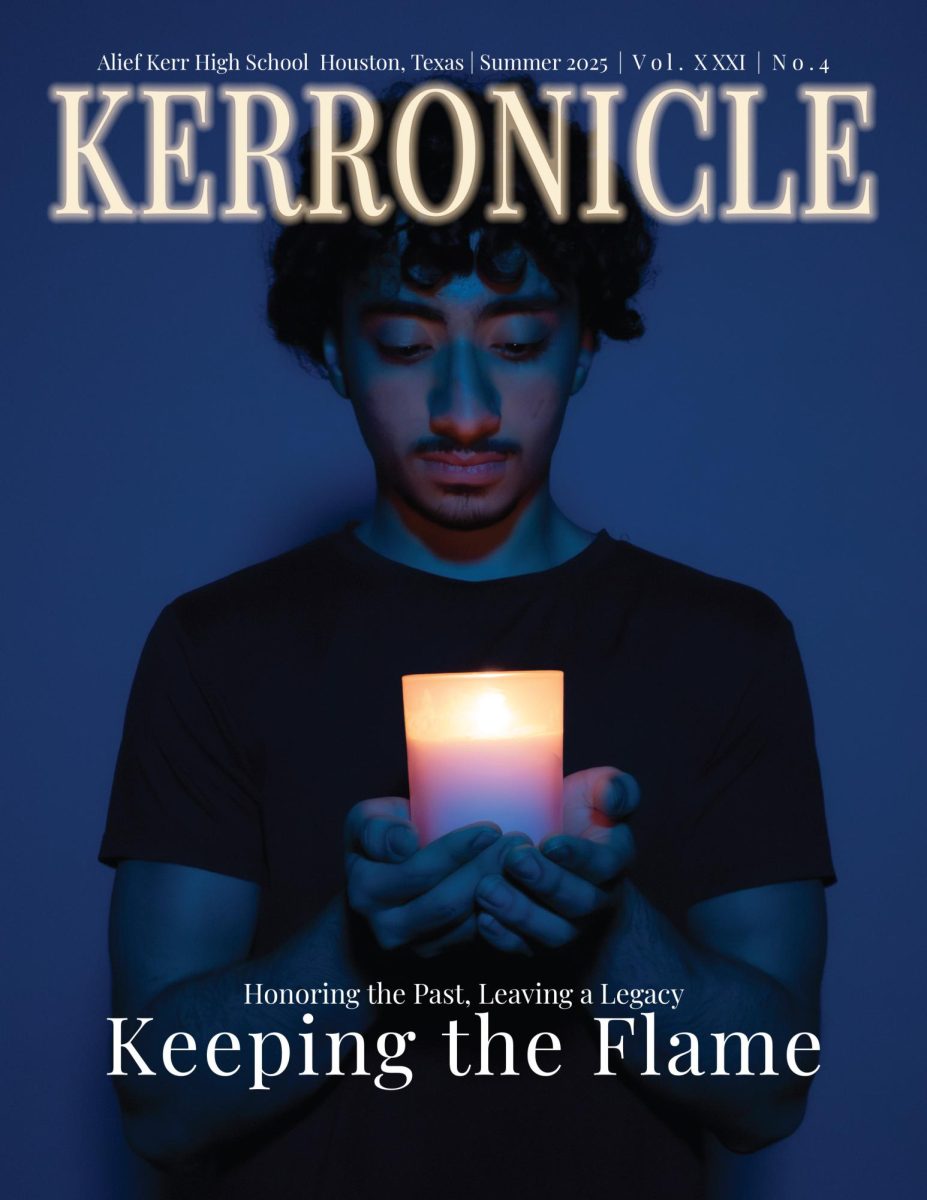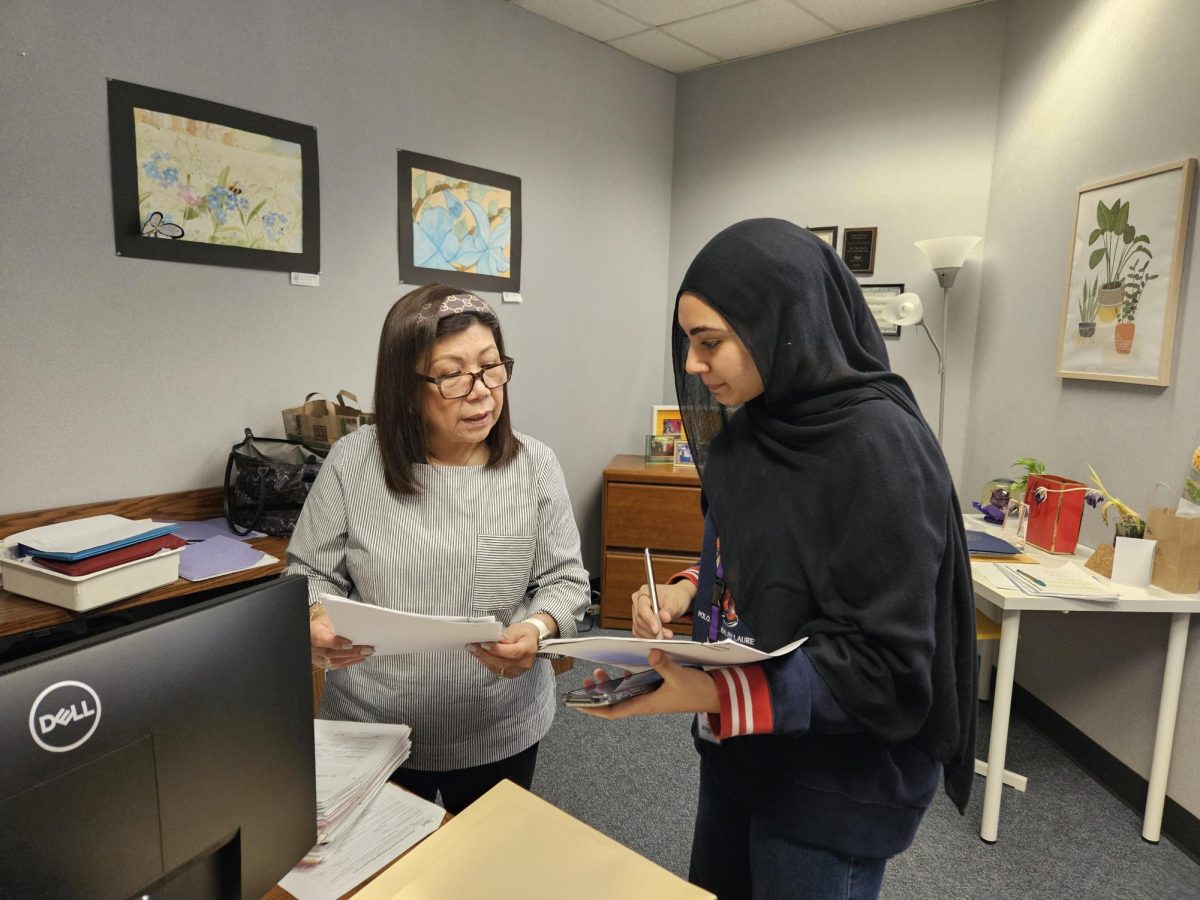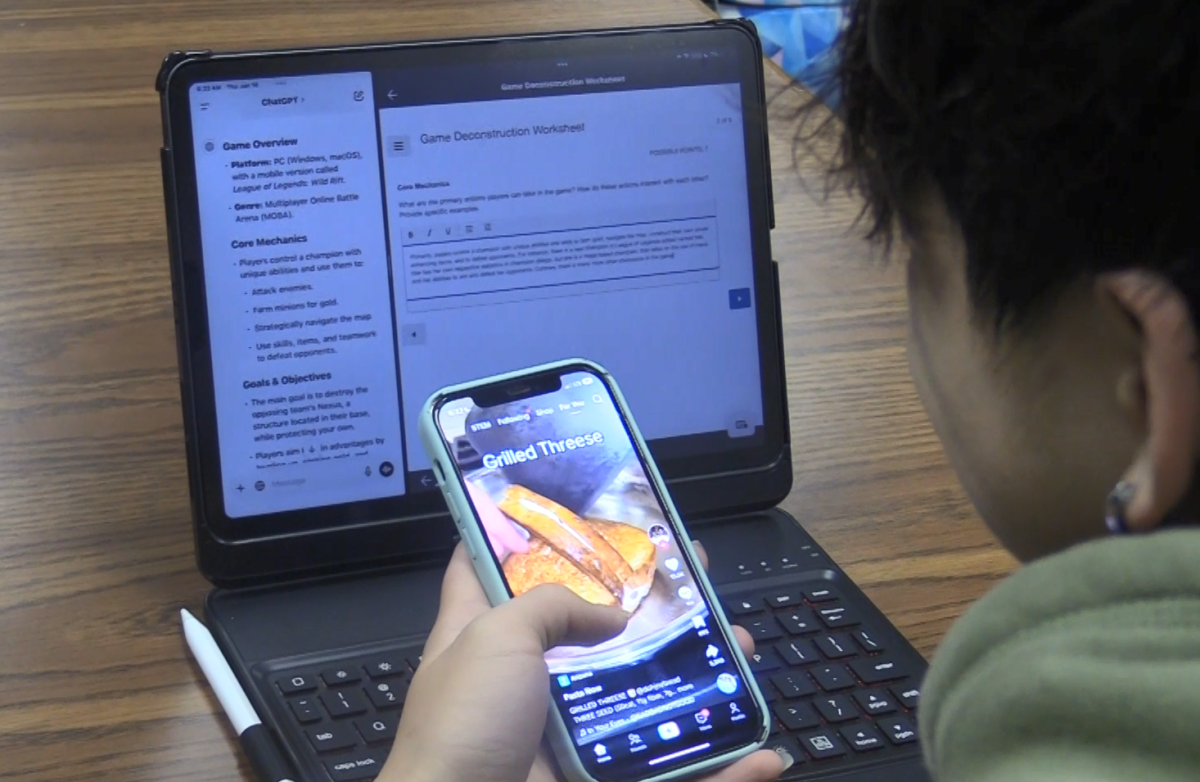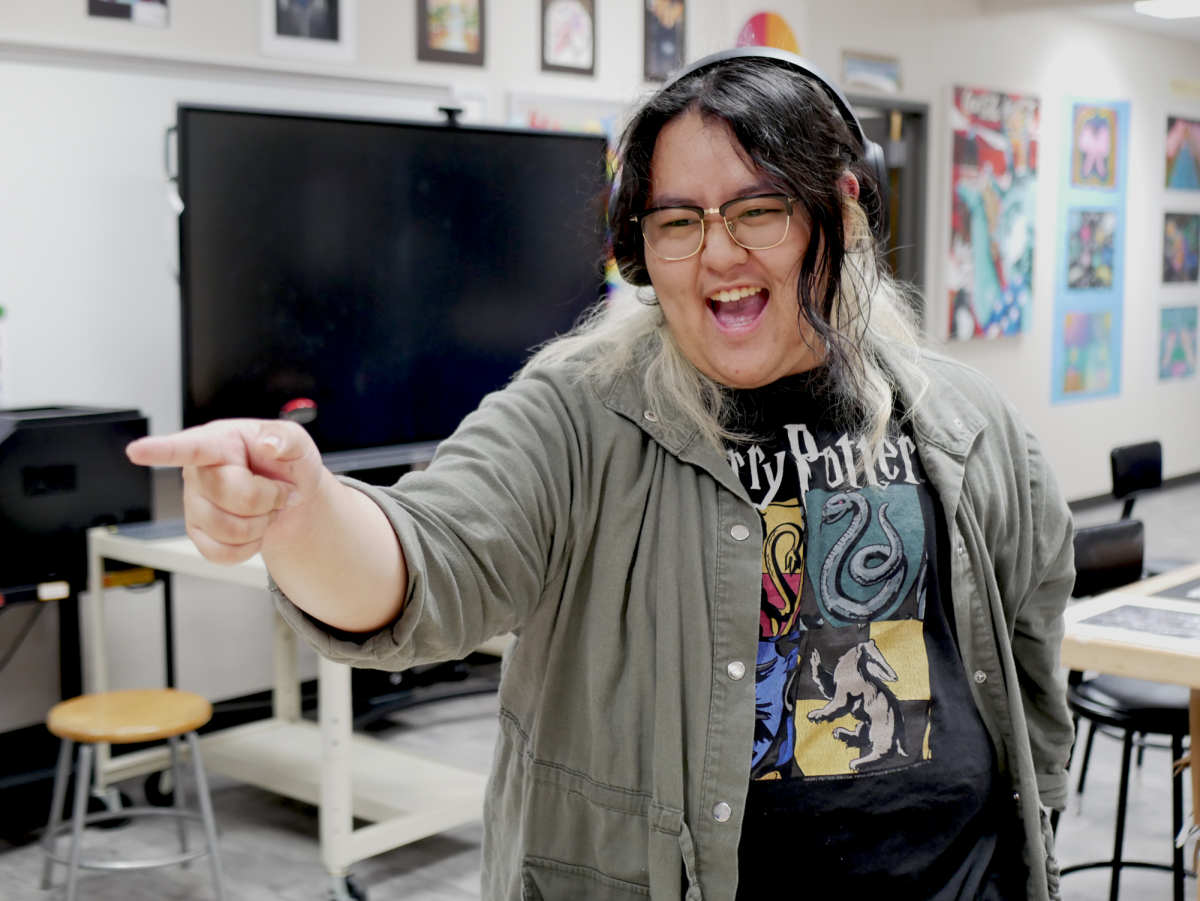It was in round one when Julie H. went against Yao L.
Both cars went down the Kerr-ash ramp and, sadly, Julie lost.
“I expected it to be all serious,” Julie said, “but when I walked into the room, the teachers made it fun and everyone was hyped up. I was nervous at first but I loosened up and had a wonderful time.”
The physics lab was filled with music blaring from the speakers, lights were flashing, and students were hyped up Friday as the bi-annual physics car race took place. Teachers Kathy Kilmer and Eric Dunlap kept the races running smoothly. Kilmer was the referee as well as the announcer and Dunlap prepared the brackets as well as keeping track of the grades.
Each student who built a car for the activity started with a grade of 75; as the races progressed, winners in each round had five points added to their grades.
“I was very nervous about my grade,” Julie said. “I had a 92 in the class and wanted to keep it an A. So I tried my very best to make my car good so it would win many rounds and give me an A on the project.”
As the race progressed to round two, Julie was up against Phat P. In this heat she won, her wood and plastic car hurtling down the ramp to reach the center platform before his. As the rounds progressed, Julie was able to pull in a total of four wins in six rounds.
In the first term students completed a research paper and planned out what was needed for their cars. Julie credited that work with her success.
“[My research] helped me know how wide, long, and how heavy I should make it, for it to be able to reach the top and stay closest to the line after a collision with my opponent’s car,” she said. She decided her car should be more narrow, and weight should be carefully balanced.
The second term was when the students used their knowledge to build their cars using materials that were available.
“The base of my car was made from a wooden block I found in my house and with the help of my dad, I got it cut so it wouldn’t be so wide,” said Julie. “I purchased a toy car and dissembled it so I would be able to get the wheels and attach it to my car. I then asked my dad to help me make a hole on the top of my car so I would be able to add small fishing weights inside (which are known to be heavy for its size). And to hold the weights down inside my car I used tape.”
Other students used wooden craft-store boxes, cardboard, and even a papier-maché egg as car components, often spending from $5 to $20 on materials and one to three hours on construction.
“My car is basically a piece of wood with wheels,” junior Teresa D. said, estimating she spent $12 on materials and about two hours to build it.
As students enjoyed observing different cars crash, Dunlap donned a mask and joined in with his own vehicle, winning a few rounds.
Julie said the party atmosphere made the final event of the project fun.
“It was wonderful,” she said. “Even though this was just a school project, this gave me a chance to bond with my dad while making my car.
“This was a fun project and I’m glad I was able to experience it. Physics is fun after all!”






